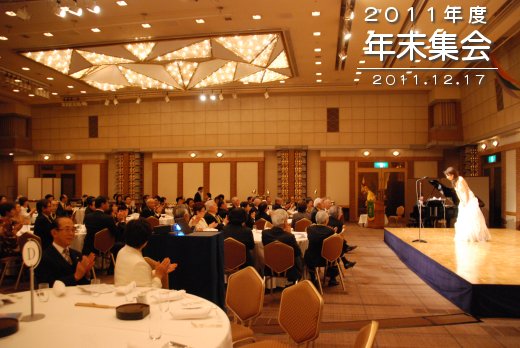2011年度 年末集会総括
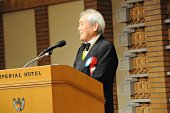

2011年12月17日(土)ICD会員、家族、来賓など108名の参加を得て、日本部会年末集会が帝国ホテル「孔雀西の間」において開催された。
昼の全国理事会から始まり、15:30より小林副会長の開会、天野会長挨拶と続いた。そして、今回講演とアトラクションを同時に日本のメゾソプラノを代表する、知的で美貌の橘今日子先生にお願いした。橘先生は東京藝大卒業後、二期会のオペラやコンサートに多数出演され、東京学芸大の講師も勤められている。前半は、オペラの発祥から、「ブラボー」の声の掛け方まで大変楽しい有意義な講義であった。その後、オペラの歌曲やクリスマスソングの美声に酔いしれ、あっと言う間の1時間であった。
カクテルパーティー後、本会会員でバングラディッシュから来られた、モハマド アブドール モミン先生の「バングラディッシュの歯科教育と文化」の講演が行われた。終了後、マスター栗山先生の乾杯を合図に、懇親会となった。
各会員は、日本で一流のホテルである帝国ホテルの美味な天ぷら、寿司などの料理、そして橘先生との写真撮影などを楽しみ、磯部副会長の閉会の辞で盛会裏に年末集会もお開きとなった。来年も楽しく有意義な本集会に
、多くの皆様のご参加をお待ちしております。
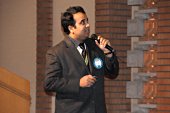
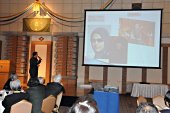
(事業運営委員会:舩木 純三)
特別講演 バングラディッシュの歯科教育と文化
Dental Education and Culture of Bangladesh
Dr. Moh. Abdul Momin Ph.D, FICD
Dental Education and Culture of Bangladesh
Dr. Moh. Abdul Momin Ph.D, FICD
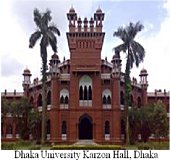
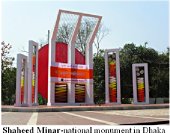
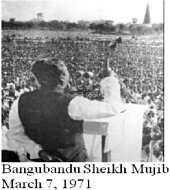
Dental Education system: There are eighty six public and private universities with twelve Dental colleges in Bangladesh. The BDS course is for five years included one year internship training. The lecture and examinations in English. There are sixty five students admission to each dental college for every year. Presently, in total there are about five thousand dental surgeons in Bangladesh. The dental surgeon usually received the practice license (by Bangladesh Medical and Dental council) and university certificate after graduation of university at the same time.
History of Bangladesh: In 1947, the partition of India was the partition of British India into two parts on the basis of religious demographics. This led to the creation of the Islamic Republic of Pakistan and the Republic of India.
Language movement: The Bengali language movement was a political effort in Bangladesh (then known as East Pakistan), advocating the recognition of the Bengali language as an official language of Pakistan. Such recognition would allow Bengali to be used in government affairs. 1948, the Government of Pakistan ordained Urdu as the sole national language, sparking extensive protests among the Bengali-speaking majority of East Pakistan. The students of the University of Dhaka and other political activists defied the law and organized a protest on 21 February 1952. The movement reached its climax when police killed student demonstrators on that day. After years of conflict, the central government relented and granted official status to the Bengali language in 1956. In 2000, UNESCO declared 21 February International Mother Language Day for the whole world to celebrate and to visit in Shaeed Minar,1 in tribute to the Language Movement and the ethno-linguistic rights of people around the world.
Independent Bangladesh: The Bangladesh Liberation War was an armed conflict pitting East Pakistan and India against West Pakistan. The war resulted in the secession of East Pakistan, which became the independent nation of Bangladesh. The great leader Sheikh Mujibur Rahman declaring East Pakistan's independence as the state of Bangladesh on 26 March 1971.2 He is popularly referred to as Sheikh Mujib, and with the honorary title of Bangabandhu ( "Friend of Bengal").
Areas and populations: Bangladesh is in South Asia sometimes converging with Southeast Asia, bordering the Bay of Bengal to the south, mostly surrounded by India and bordering Myanmar in the southeast. Presently the total populations are about 16 corer and the areas of Bangladesh are 56000 square miles.
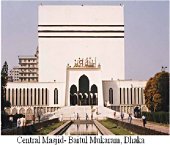
Culture and society: Bangladesh is a hierarchical society. People are respected because of their age and position and older people are naturally viewed as wise and are granted respect. Bangladeshis expect the most senior male, by age or position, to make decisions that are in the best interest of the group. This is also valid in businesses, the majority of which will be family owned/run. Religion: The majority (about 95%) of Bangladeshis are Muslim, rest of 5% are Hindu, Buddhist, and Christian. There is a strong tradition of music, dance, and literature that includes classical devotions of Hindu and Muslim music.
Festivals: Islam defines many of the festivals in Bangladesh including two one after Ramadan (thirty days fasting) Eid and one after the Hajj Eid and for Hindus Durga Puja and Kali Puja. On the whole an entire community participates in each other's religious ceremonies.
Seasons and weather: There are six seasons in Bangladesh including

Autumn (September to October): the land turns into a carpet of bright green rice shoots while the smell of drying jute invades the air. Flowers bloom, the rice ripens and the harvest begins. Although the air is humid, there is a slight chill late at night.
Late autumn (October to November): during this season, the land is at its luscious best. It marks the start of the wedding season where receptions are held under red, blue, green or white tents.
Winter (November to December): from mid-November to early January, the weather becomes more arid and less humid. The earth dries and dust forms. Warm clothes are pulled out.
Spring (December to February): the coolest days are from mid-December to February when the days are golden with light, the flowers are blooming and the nights and early mornings are chilly. In this season is suitable for traveling in Bangladesh.
Summer (March to May): the weather warms up a bit each day until March 1, when the heat starts intensifying more rapidly. The soil turns a dusty khaki and then almost white.
References
1. Glassie, Henry and Mahmud, Feroz.2008.Living Traditions. Cultural Survey of Bangladesh Series-II. Asiatic Society of Bangladesh. Dhaka. p.578
2. a b "Civil War Rocks East Pakistan". Associated Press. Daytona Beach, Florida, USA: Daytona Beach Morning Journal, via Google News. 27 March 1971.
Acknowledgements: I would like to thank Dr. Koji Hashimoto for reviewed this article.
新フェローレポート
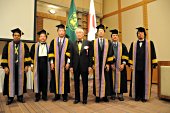
20011年5月21日アメリカンクラブにて伝達式を終え、鈴木設矢、佐藤まゆみ両フェロー推薦により入会させていただきました新フェローの足立徹と申します。
私は東京の都立戸山高校を卒業後、日本歯科大学新潟歯学部卒業、日本歯科大学歯周病学教室、武蔵小金井の開業医を経て、現在東京都多摩市にて開業しております。
2011年12月17日の年末集会では、オペラ歌手橘今日子さんのオペラを生れて初めて聞かせていただき、オペラの楽しみ方を少し学ばせていただきました。オペラはマイクを使わない生の声で、細身の体から発せられる声に驚かされました。特にピアフのHymne a l’amour(愛の賛歌)は幼少のころ、両親が聞いていた曲なので懐かしさと感動を覚えました。今後ともICDのメンバーとしてご指導、ご鞭撻のほど、よろしくお願いします。
(新フェロー:足立 徹)
2011年新フェローの昭和大学歯学部出身の村岡正弘です。この度、母校歯学部長宮崎隆先生と同窓会長飯島裕之先生の推薦で伝統あるICDに入会のお許しをいただき身の引き締まる思いでございます。
さて年末集会では、帝国ホテルにて天野会長をはじめ来賓の株式会社GC中尾社長から心に残るお言葉を頂戴したり、またオペラ歌手の橘今日子さんの歌と解説を拝聴したり有意義な時間を過ごすことができました。ご準備してくださった関係各位に御礼を申し上げます。
これからも先輩の先生方のご指導の下ICDのメンバーとして誇りを持って臨床や講演活動に精進していく所存ですので よろしくお願いします。
(新フェロー:村岡 正弘)
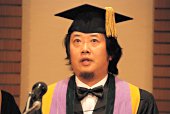
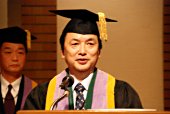
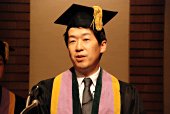
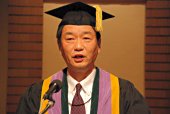
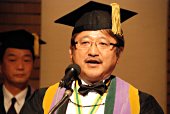
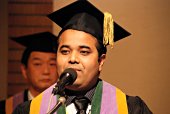
アトラクション
『オペラの楽しみ方お教えします♪』という題で橘今日子先生にご講義、ご講演して頂ました。
橘先生はお話でも触れていられましたが、私はオペラ歌手というと体が楽器であるといわれるように大変大きな方しか成れないと思っていましたが、大変スタイルが良く美しく、不謹慎ですが、とてもビックリしました。お話もとてもお上手で、『オペラは総合芸術であるけれどテーマは「男女の色恋沙汰」であるとか。お洒落やお酒を楽しみながら聞けば良い。聞く前にプログラムを読んで楽出掛ければ楽しみが倍増する。かけ声も「Bravo!」と言ってみよう』など楽しみ方を教えて頂きました。私はかけ声は、「ブラボー」だと思っていましたが、「ブラッボ」(男)、「ブラッバ」(女)、「ブラッビ」(複数)など発音も、対象者に分けて言葉が異なることが知りませんでした。
その後、メゾ ソプラノの美しい声で演奏され、会員すべてが橘先生の歌声に魅了され、日頃の診療、研究の事を一時忘れ、とても癒されました。
(フェロー:服部 修)
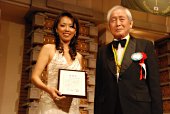

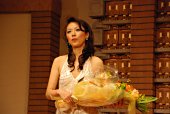

今年の年末集会アトラクションは声楽家の 橘今日子さん。
歌舞伎、映画等は観に行く私ですが、オペラ鑑賞は恥ずかしながらかつてただの1回だけ。どうも敷居が高く、馴染みがないのが現状です。ところが…出ていらした橘さんは最近出産なさったとは思えないスレンダー美人。もうそこでオペラのイメージが変わりました。(すみません、オペラ歌手は太っていると思い込んでいました。)
彼女がクラシックの世界に入られたのはお父様がお好きだったという影響があったそうです。でもそのお父様と言えども鑑賞中「夢の世界」を漂うこともしばしばだったとか。
「それでいいのです。」とは彼女の弁。
「そうだ、来年はオペラを観に行こう!」 単純にそう思ってしまった私でした。
(フェロー:志田 佐和子)
年末集会・全体のスケッチ
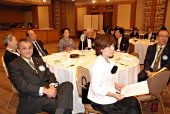
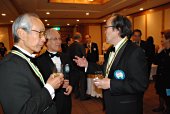
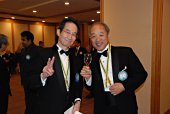
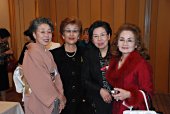



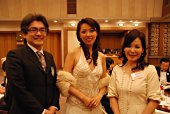
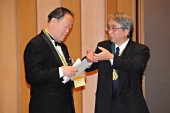
 |







